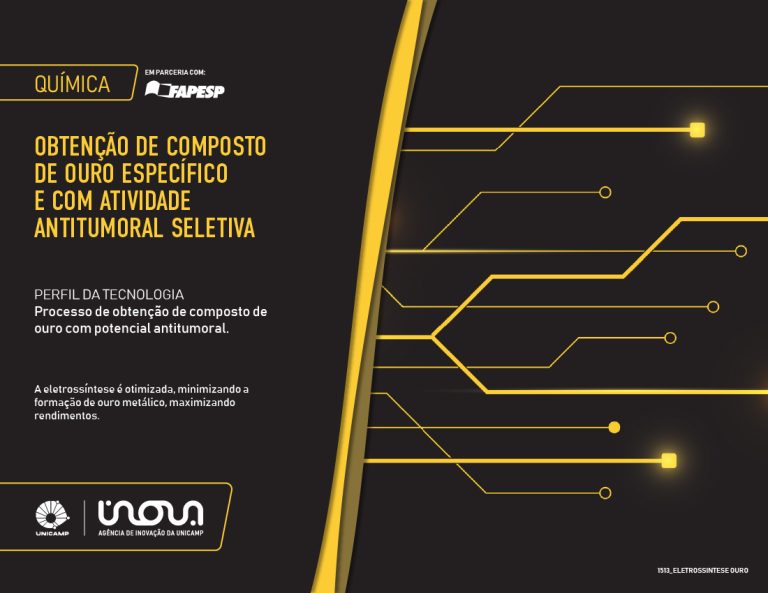Patents
BR1020240035607

The use of gold compounds has attracted attention due to its potential in medical applications, especially in antitumor action. However, obtaining it depends on highly precise techniques, capable of avoiding losses, contamination and unwanted by-products. Among the currently available approaches, direct electrosynthesis of metal complexes has shown promising results, bringing more favorable conditions, with higher reaction yield, lower costs and shorter times. However, the usual synthesis procedure produces a set of unfavorable impurities that are difficult to remove and contamination through reducing agents. As a way to resolve this impasse, researchers at Unicamp developed a process to obtain a specific gold compound, using a reactor based on a conventional glass electrochemical cell, which showed selective antitumor activity. One of the differences of the method is that it is not necessary to add a reducing agent, avoiding contamination and minimizing (in some cases reducing to zero) the formation of metallic gold. Regarding selective tumor activity, the method was tested on tumorigenic and non-tumorigenic cells and showed no action on normal cells, which allows the generation of safer treatments.

The use of gold compounds has attracted attention due to its potential in medical applications, especially in antitumor action. However, obtaining it depends on highly precise techniques, capable of avoiding losses, contamination and unwanted by-products. Among the currently available approaches, direct electrosynthesis of metal complexes has shown promising results, bringing more favorable conditions, with higher reaction yield, lower costs and shorter times. However, the usual synthesis procedure produces a set of unfavorable impurities that are difficult to remove and contamination through reducing agents. As a way to resolve this impasse, researchers at Unicamp developed a process to obtain a specific gold compound, using a reactor based on a conventional glass electrochemical cell, which showed selective antitumor activity. One of the differences of the method is that it is not necessary to add a reducing agent, avoiding contamination and minimizing (in some cases reducing to zero) the formation of metallic gold. Regarding selective tumor activity, the method was tested on tumorigenic and non-tumorigenic cells and showed no action on normal cells, which allows the generation of safer treatments.